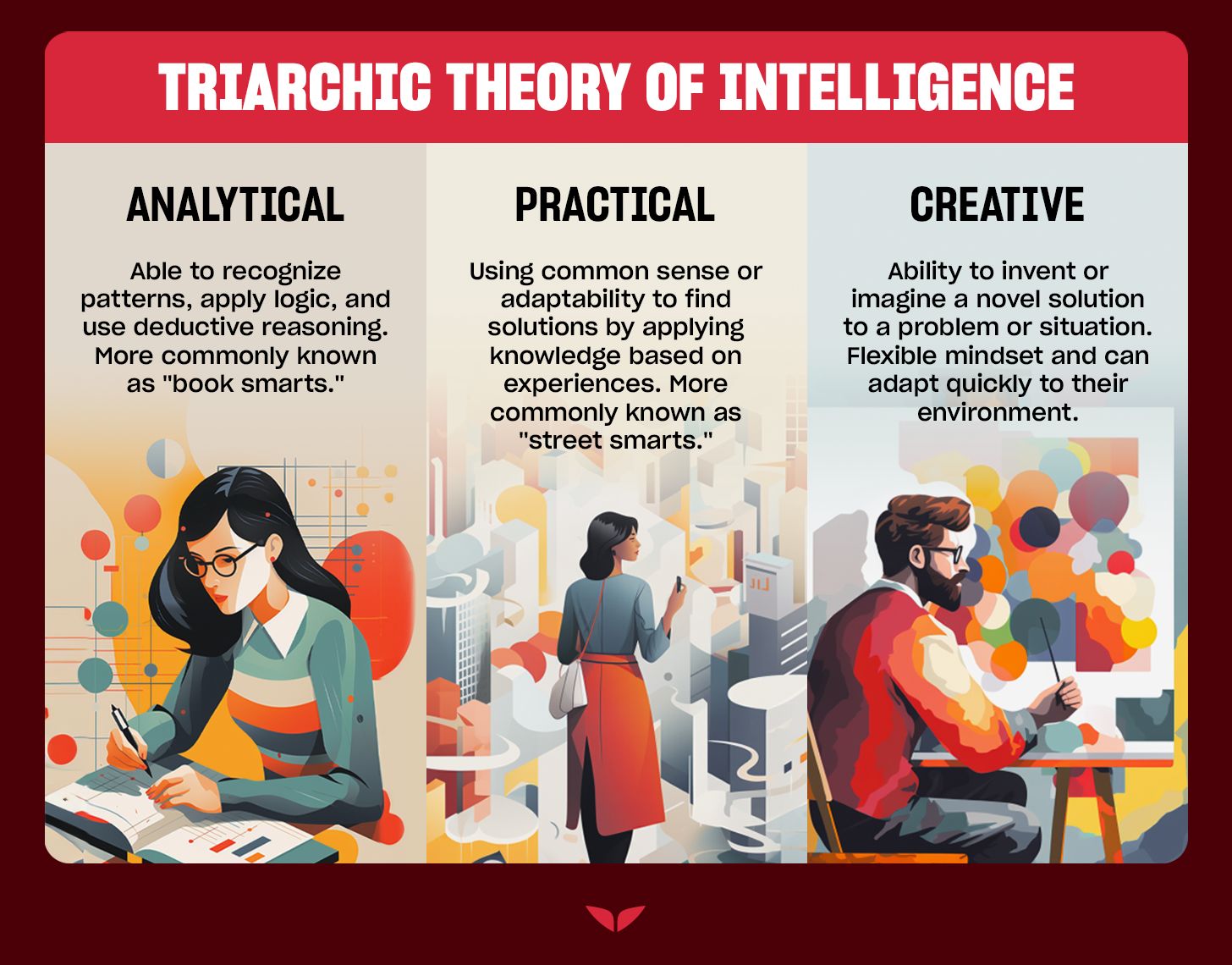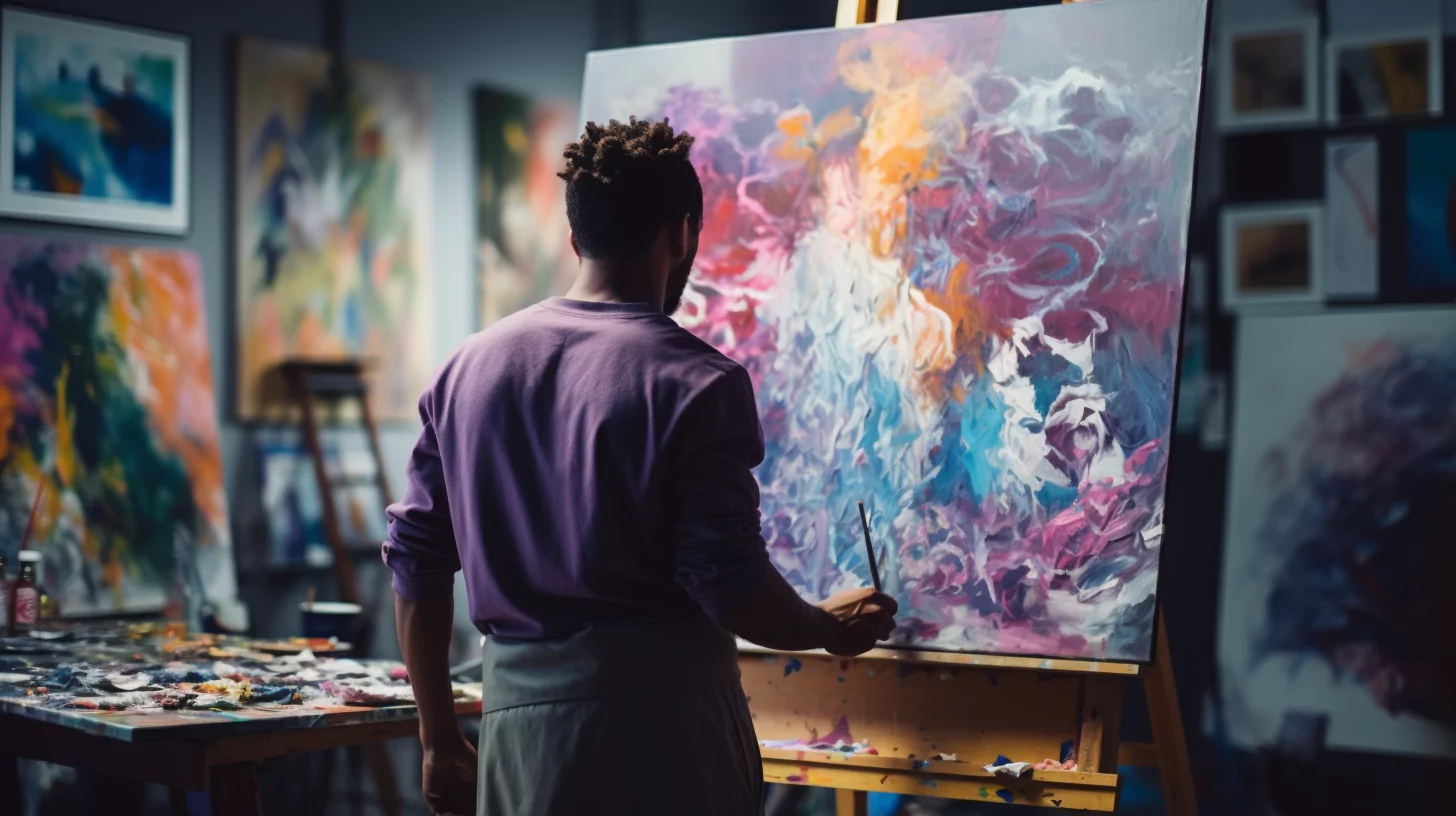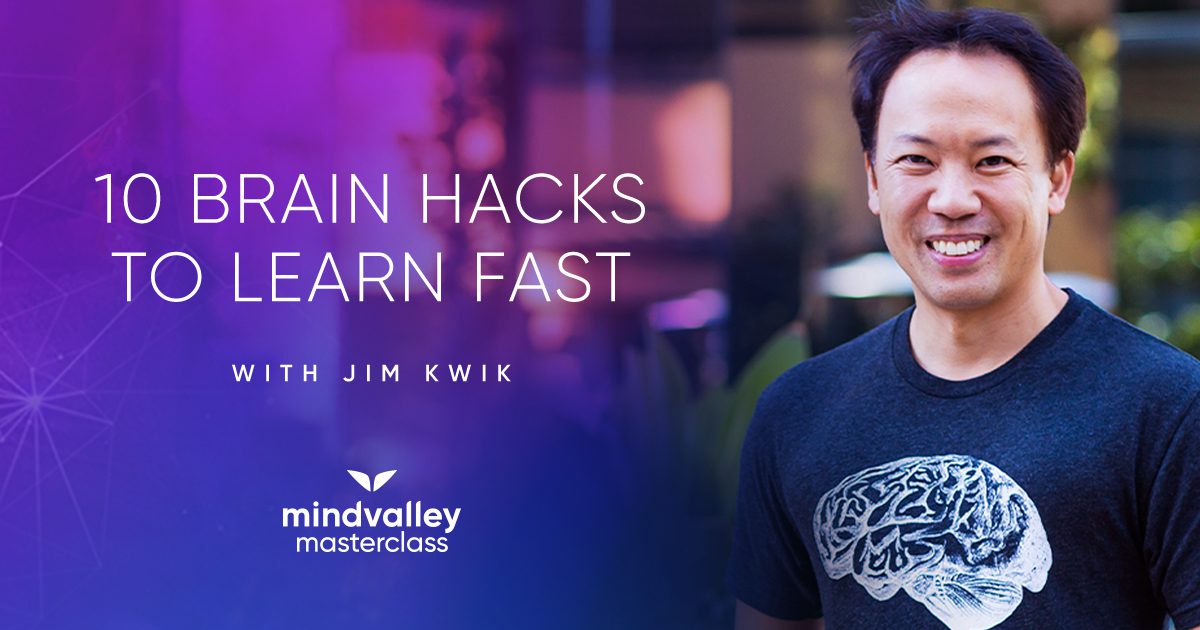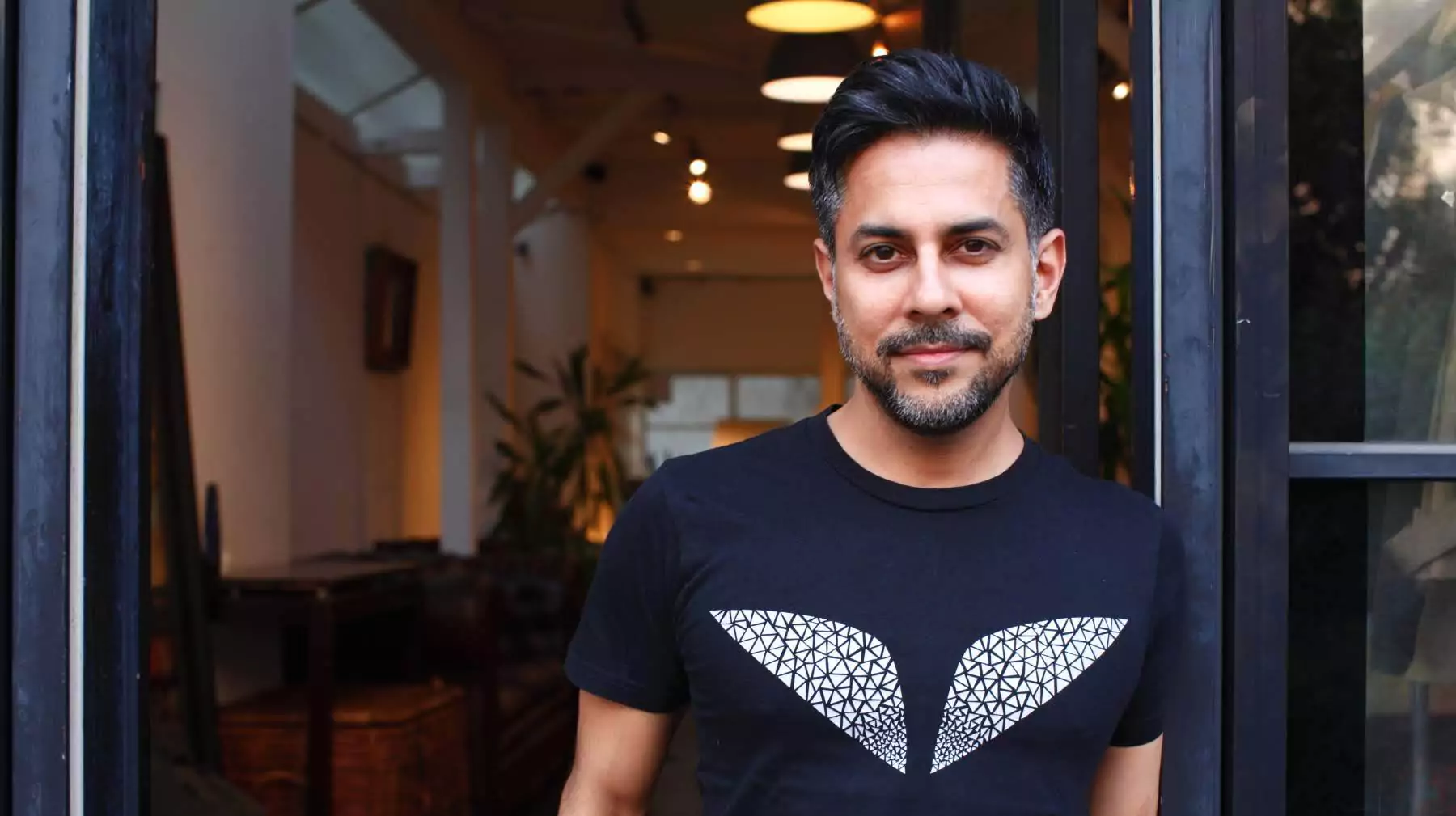Frida Kahlo, Banksy, Freddy Mercury, George Lucas, and even social entrepreneur and trainer for Mindvalley’s Zero to $100 Million Quest, Miki Agrawal—there’s one thing they have in common, and that’s creative intelligence.
As hinted at in its name, creative intelligence has to do with creativity. And it’s one of the three fundamental components of psychologist Robert Sternberg’s triarchic theory of intelligence (the other two being analytical and practical).
But there’s more to it than just that.
“Our precious gift is our brain,” according to Jim Kwik, a world-renowned memory and brain coach. And the more you understand this type of intelligence, the more you’ll be able to use it to your advantage in everyday situations.
Understanding Sternberg’s Triarchic Theory of Intelligence
Sternberg’s theory is just one of four major theories of intelligence. As opposed to the others that focus on behavioristic aspects of intelligence, the triarchic theory accounts for a more cognitive approach.
It places human intelligence into three categories:
- Analytical (also known as componential) is closely aligned with problem-solving. More commonly known as “book smarts,” those who use analytical thinking are able to recognize patterns, apply logic, and use deductive reasoning.
- Creative (also known as experiential) is the ability to invent or imagine a novel solution to a problem or situation. People with this intelligence tend to have a flexible mindset and can adapt quickly to their environment.
- Practical (also known as contextual) is about using common sense or adaptability to find solutions by applying knowledge based on experiences. Practical intelligence is more commonly known as “street smarts.”

The reality is, we’re endowed with all three types of intelligence. But as humans, we tend to lean on the one that works best for us or that draws our interest.
So for the creative types or those who want to step out of your intelligence comfort zone, let’s dive in.
What Is Creative Intelligence?
If you’re the type to quickly pick up new skills and can devise solutions to abstract, open-ended questions on the fly, it’s quite likely you possess creative intelligence. It’s the capacity to encounter a novel problem and devise a new and unique solution, as per Sternberg’s triarchic theory of intelligence.
Those who are creative are risk-takers, willing to be different and engage in divergent thinking, which is the ability to think outside the box. Because of this “dare to fail attitude,” they’re often impulsive and change their minds.
One way to assess one’s intelligence is to ask an open-ended hypothetical question about an unusual problem that doesn’t really have a right or wrong answer. The intention is to see how the candidate approaches the problem and what type of intelligence they demonstrate the most.
For example, here’s an interview question that was asked by Google: “How much would you charge to wash all the windows in Seattle?”
Yeah, good luck with that one!
What is creative intelligence in psychology?
When it comes to creative intelligence, psychology refers to it as the ability to generate, create, or discover novel solutions for unfamiliar problems or situations. It combines creativity, innovation, intuition, perception, and intellectual curiosity.
According to Sternberg, creative intelligence requires very little outside input to function. It develops spontaneously, without instruction or guidance.
Although having a powerful imagination may help creative types come up with solutions to new problems that are avant-garde, they need more than imagination to possess this form of intelligence. The reality is, creative types examine experiences and use previously collected knowledge and abstract thinking to lead them towards insights and innovative ideas.
What Is an Example of Creative Intelligence?
Creative intelligence manifests itself in all sorts of ways. Often, it’s associated with the arts, including paintings, graphic design, music, film, etc.
An example is installation art, like Frida Kahlo’s paintings, Banksy’s street art, or NFTs. Another example is music, like Beethoven’s Symphony No. 5 or Michael Jackson’s Billie Jean. And yet another example is George Lucas’ Star Wars or James Cameron’s Avatar.
But this intelligence model goes beyond artistic license. Remember, creative intelligence equals finding creative solutions.
Now, imagine you and your friends go camping, and no one remembers to bring a lighter for the barbecue. One friend in the group (there’s always one, isn’t there?) keeps proposing and trying new ways to fire it up.
Fast forward to a later hour, and that friend used someone’s prescription glasses as a magnifying glass to light up the fire. This is also an example of creative intelligence.

Why Is Creative Intelligence Important?
Creative intelligence is one of the keys to mastering new skills. This form of intelligence can most likely result in innovative solutions and ideas.
Think of it this way: Have you ever had trouble learning a new task or concept? Everyone picks things up at different rates. But having the ability to pick up a new talent or skill quicker than others may be your own experiential intelligence at work.
Devising new approaches to old problems is one of the hallmarks of real innovation. So, instead of using a tried-and-true approach, you take the courageous step to experiment and try something new.
Learning is one of the only ways we can truly test ourselves. And the better we know our own minds, the more successful we can be.
Jim Kwik’s 5 Keys to Limitless Creativity
“The future belongs to the creatives,” says Jim Kwik, who is also the trainer of Mindvalley’s Superbrain Quest. As the world continues to turn to automated technology, like artificial intelligence, the one thing that we’ll still depend on is our imaginations, to which he adds, “There’s no limit to your creativity.”
So how do you tap into your creative power? Jim shares five “Kwik Tips” in a podcast episode of Kwik Brain.
1. Mindset
Your mindset has everything to do with your perspective—how you view the world, the people around you, and, most importantly, yourself.
So when it comes to creativity, reflect on how you look at it. Ask yourself:
- Do you believe you’re capable of being creative?
- And do you deserve to be so?
More often than not, if your perception is on the negative side, you tend to believe the myth that you’re either born with creativity or you’re not.
However, it’s something that’s built, not born. “You discover [creativity]; you develop it through work,” says Jim.
Jim’s “Kwik Tip”: “I am…” are the two most powerful words in the English language. Whatever you put after that statement will be your life’s focus.
So be aware of your self-talk and limiting beliefs. And those “I am…” statements? It might be time to tell yourself, “I am creative.”
2. Ask
Ask and you shall receive, as the saying goes. And questions can be quite beneficial.
According to Jim, asking questions helps your mind focus on something brand new. Behavioral science research even shows that it naturally improves emotional intelligence, spurs learning, fuels innovation, improves performance, and builds rapport, just to name a few.
Jim’s “Kwik Tip”: Ask questions like:
- How can I be more creative?
- What am I not paying attention to?
- What elements can I connect to create something that wasn’t there before?
When you ask these types of questions, they’re going to lead to brand new answers in creativity.
3. Goals
The goal of setting goals is of two points: 1) a long-term vision and 2) short-term motivation.
It helps trigger new behaviors, align your focus, and sustain that momentum. What’s more, it gives your brain clarity. And, as Jim points out, clarity becomes power.
So what are your goals for being more creative? Make them specific so that when you set your goals, you’re motivated to achieve them.
Jim’s “Kwik Tip”: Write down your creative goals—it takes something invisible and makes it visible. Then transfer it to a vision board, which helps your subconscious mind focus on the goals and the steps you need to take to achieve them. And as you achieve each goal, drop a little note in a gratitude jar so you can feel the satisfaction of a job well done.
4. Imagination
“Knowledge is what is, but imagination is what could be,” says Jim. You could say that it’s a magnet for making things happen.
Imagination is the first step for creativity. So really, I would say that creativity is imagination in action. — @jimkwik Click To TweetIt’s a powerful way to give your brain a boost and help you look at the world from a whole new perspective.
Jim’s “Kwik Tip”: Use your question-asking abilities as a way to rouse your imagination.
For example, think of a lemon. What does it smell like? Take a lick—how does it taste? How would the two change if you were to put sugar on it? Or salt?
Once you access your imagination, use your knowledge to create new answers.
5. Care
Creativity comes from your limitless mind, so taking care of it is super important.
There’s no need to make a drastic change when it comes to your brain’s well-being. Start off with simple habits and, as the old adage goes, take it one step at a time.
Jim’s “Kwik Tip”: If your body energy levels are low, your creative energy levels are going to be as well. So get good sleep, eat nutritious food, and exercise.
And in Jim’s famous words, “When the body moves, the brain grooves.”
Supercharge Your Creativity
There’s a quote by Sir Kenneth Robinson, an international advisor on education, that speaks volumes on the values of creativity in life. It goes like this:
“Creativity is as important in education as literacy, and we should treat it with the same status. Furthermore, creativity is basic to making our society viable because, without it, we would lose our competitive edge.”
He, along with people like Jim, are advocates for cultivating creative intelligence. And their hard work can help people like you learn how to use your creativity to solve problems, innovate, and indulge in more creative pursuits.
So if you’ve ever wanted to feel and be more creative, head over to Mindvalley, where you can get guidance from Jim in the Superbrain Quest. What’s more, you have access to live talks featuring experts in the field of brain health, so you can learn how to better take care of your brain.
And as Jim says, “None of it works unless YOU work… If knowing is half the battle, action is the second half of the battle.”










